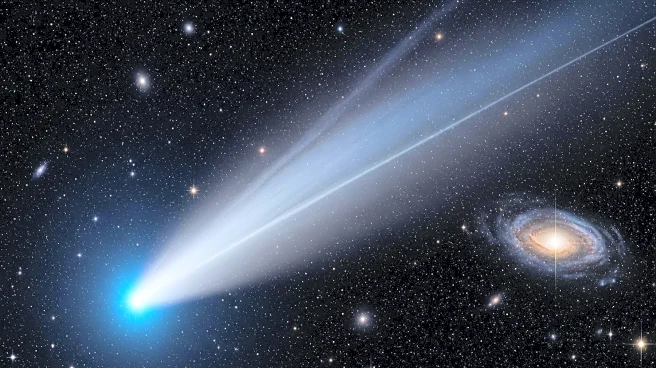What's Happening?
Astronomers using NASA's James Webb Space Telescope have discovered strong evidence of a giant planet orbiting Alpha Centauri A, a star in the closest stellar system to our Sun. The Alpha Centauri system, located just 4 light-years away, consists of the binary stars Alpha Centauri A and B, and the red dwarf Proxima Centauri. While Proxima Centauri has three confirmed planets, the presence of planets around Alpha Centauri A and B has been difficult to confirm. Recent observations from Webb's Mid-Infrared Instrument (MIRI) provide the strongest evidence yet of a gas giant orbiting Alpha Centauri A. If confirmed, this planet would be the closest to Earth orbiting in the habitable zone of a Sun-like star, although it is unlikely to support life due to its gas giant nature.
Why It's Important?
The discovery of a gas giant in the Alpha Centauri system could significantly impact the field of exoplanet science. It would provide a nearby target for detailed characterization by Webb and other observatories, potentially offering insights into planetary formation and dynamics in systems similar to our own. This finding could also stimulate further research and exploration efforts, enhancing our understanding of the universe and the potential for life beyond Earth. The proximity of the Alpha Centauri system makes it an attractive target for future missions and studies, potentially leading to advancements in space exploration technologies and methodologies.
What's Next?
Further observations are needed to confirm the existence of the planet and to understand its characteristics. Researchers will likely conduct additional studies using Webb and other telescopes to gather more data on the planet's orbit, composition, and potential interactions with its host star. The scientific community may also explore the implications of this discovery for theories of planetary formation and stability in binary star systems. As more data becomes available, it could lead to new models and hypotheses about the conditions necessary for planet formation and the potential for habitable environments in nearby star systems.











